Asaf Noy
End-to-End Audio Strikes Back: Boosting Augmentations Towards An Efficient Audio Classification Network
Apr 29, 2022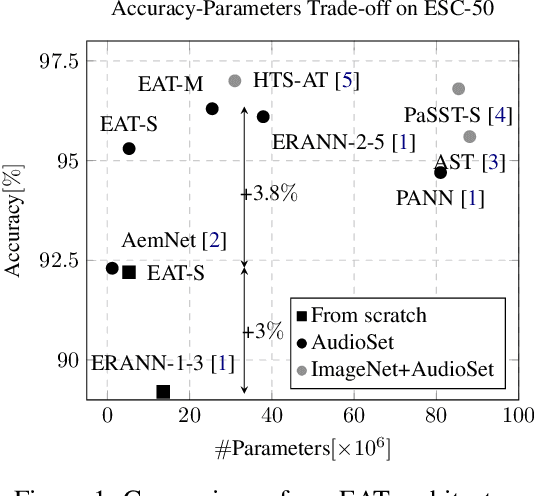
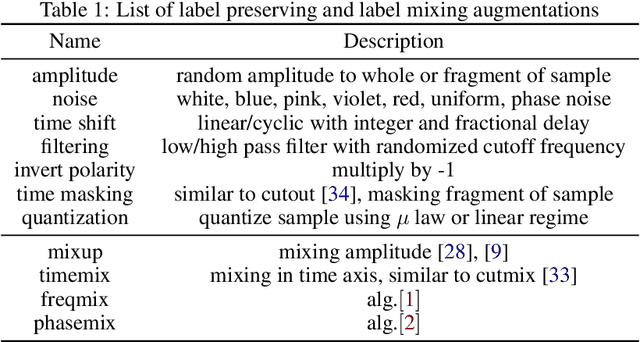
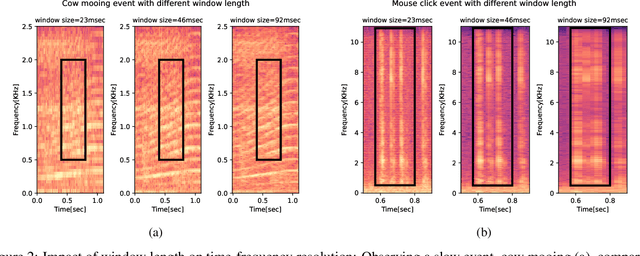
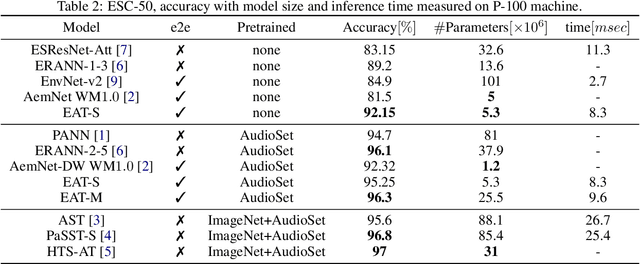
Abstract:While efficient architectures and a plethora of augmentations for end-to-end image classification tasks have been suggested and heavily investigated, state-of-the-art techniques for audio classifications still rely on numerous representations of the audio signal together with large architectures, fine-tuned from large datasets. By utilizing the inherited lightweight nature of audio and novel audio augmentations, we were able to present an efficient end-to-end network with strong generalization ability. Experiments on a variety of sound classification sets demonstrate the effectiveness and robustness of our approach, by achieving state-of-the-art results in various settings. Public code will be available.
Diverse Imagenet Models Transfer Better
Apr 19, 2022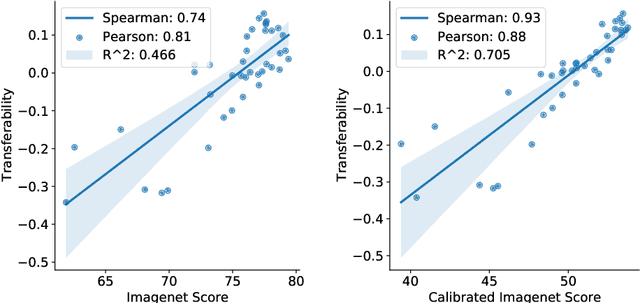

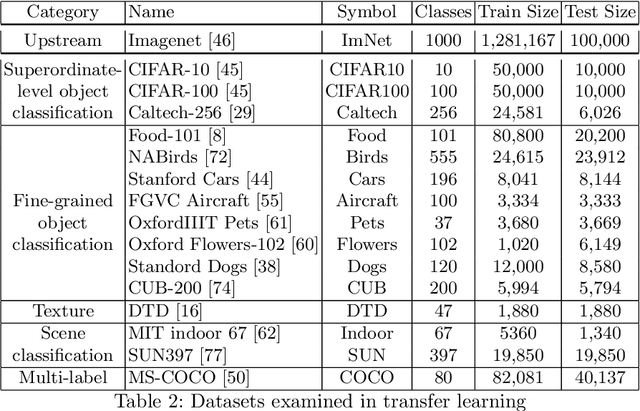
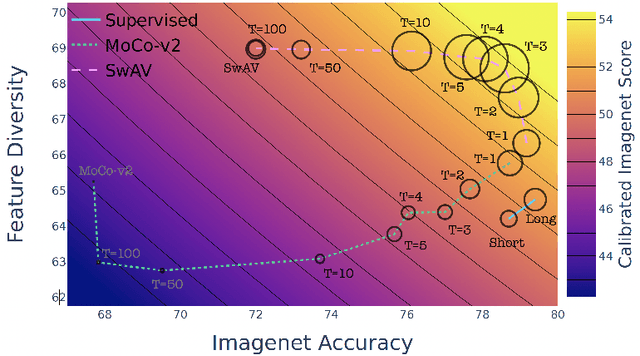
Abstract:A commonly accepted hypothesis is that models with higher accuracy on Imagenet perform better on other downstream tasks, leading to much research dedicated to optimizing Imagenet accuracy. Recently this hypothesis has been challenged by evidence showing that self-supervised models transfer better than their supervised counterparts, despite their inferior Imagenet accuracy. This calls for identifying the additional factors, on top of Imagenet accuracy, that make models transferable. In this work we show that high diversity of the features learnt by the model promotes transferability jointly with Imagenet accuracy. Encouraged by the recent transferability results of self-supervised models, we propose a method that combines self-supervised and supervised pretraining to generate models with both high diversity and high accuracy, and as a result high transferability. We demonstrate our results on several architectures and multiple downstream tasks, including both single-label and multi-label classification.
Solving ImageNet: a Unified Scheme for Training any Backbone to Top Results
Apr 07, 2022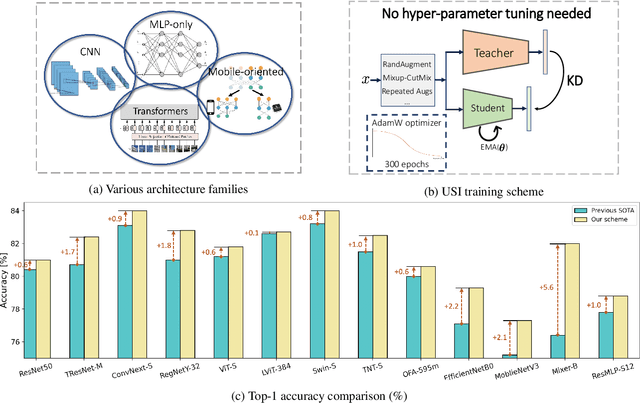
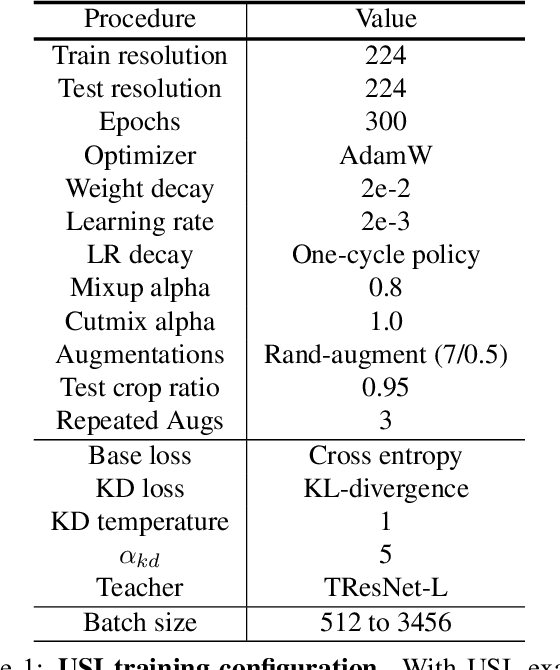

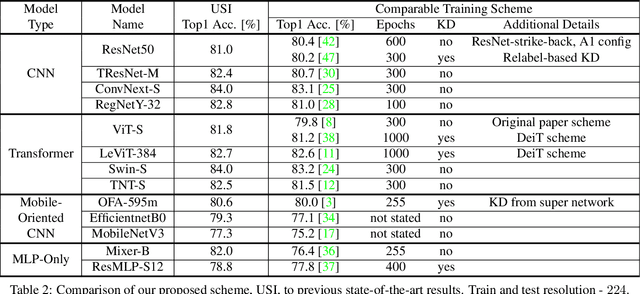
Abstract:ImageNet serves as the primary dataset for evaluating the quality of computer-vision models. The common practice today is training each architecture with a tailor-made scheme, designed and tuned by an expert. In this paper, we present a unified scheme for training any backbone on ImageNet. The scheme, named USI (Unified Scheme for ImageNet), is based on knowledge distillation and modern tricks. It requires no adjustments or hyper-parameters tuning between different models, and is efficient in terms of training times. We test USI on a wide variety of architectures, including CNNs, Transformers, Mobile-oriented and MLP-only. On all models tested, USI outperforms previous state-of-the-art results. Hence, we are able to transform training on ImageNet from an expert-oriented task to an automatic seamless routine. Since USI accepts any backbone and trains it to top results, it also enables to perform methodical comparisons, and identify the most efficient backbones along the speed-accuracy Pareto curve. Implementation is available at:https://github.com/Alibaba-MIIL/Solving_ImageNet
ML-Decoder: Scalable and Versatile Classification Head
Nov 25, 2021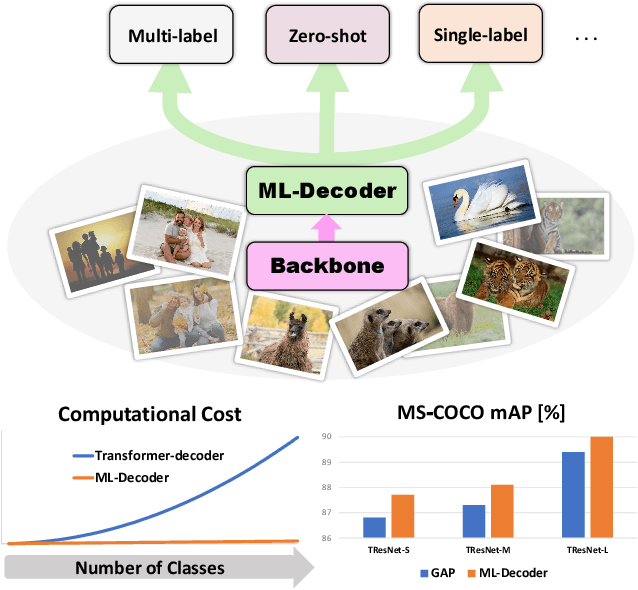
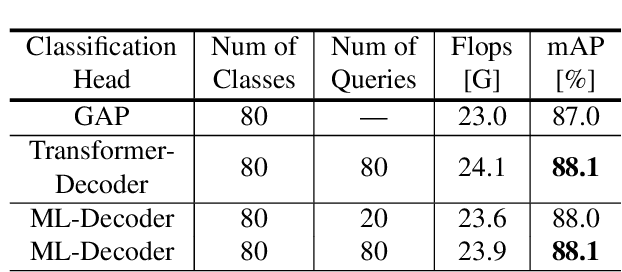
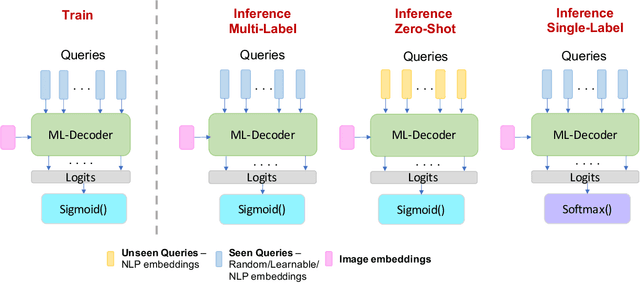
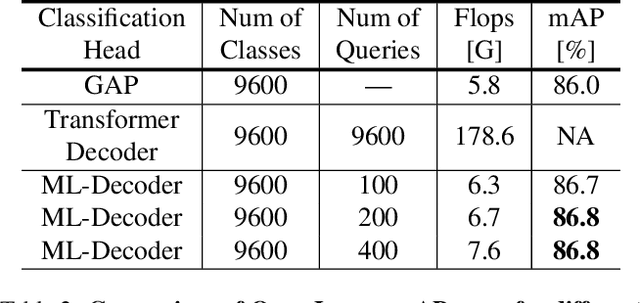
Abstract:In this paper, we introduce ML-Decoder, a new attention-based classification head. ML-Decoder predicts the existence of class labels via queries, and enables better utilization of spatial data compared to global average pooling. By redesigning the decoder architecture, and using a novel group-decoding scheme, ML-Decoder is highly efficient, and can scale well to thousands of classes. Compared to using a larger backbone, ML-Decoder consistently provides a better speed-accuracy trade-off. ML-Decoder is also versatile - it can be used as a drop-in replacement for various classification heads, and generalize to unseen classes when operated with word queries. Novel query augmentations further improve its generalization ability. Using ML-Decoder, we achieve state-of-the-art results on several classification tasks: on MS-COCO multi-label, we reach 91.4% mAP; on NUS-WIDE zero-shot, we reach 31.1% ZSL mAP; and on ImageNet single-label, we reach with vanilla ResNet50 backbone a new top score of 80.7%, without extra data or distillation. Public code is available at: https://github.com/Alibaba-MIIL/ML_Decoder
IQNAS: Interpretable Integer Quadratic Programming Neural Architecture Search
Oct 24, 2021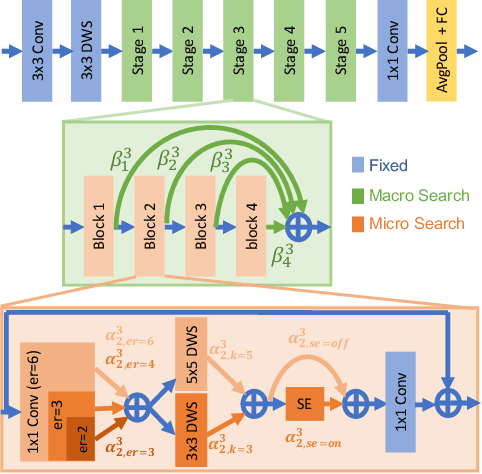
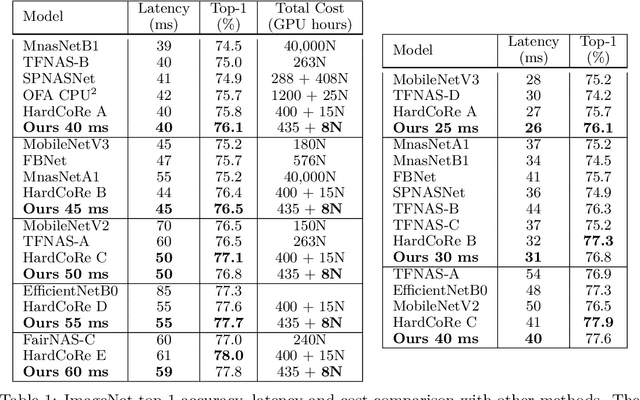


Abstract:Realistic use of neural networks often requires adhering to multiple constraints on latency, energy and memory among others. A popular approach to find fitting networks is through constrained Neural Architecture Search (NAS). However, previous methods use complicated predictors for the accuracy of the network. Those predictors are hard to interpret and sensitive to many hyperparameters to be tuned, hence, the resulting accuracy of the generated models is often harmed. In this work we resolve this by introducing Interpretable Integer Quadratic programming Neural Architecture Search (IQNAS), that is based on an accurate and simple quadratic formulation of both the accuracy predictor and the expected resource requirement, together with a scalable search method with theoretical guarantees. The simplicity of our proposed predictor together with the intuitive way it is constructed bring interpretability through many insights about the contribution of different design choices. For example, we find that in the examined search space, adding depth and width is more effective at deeper stages of the network and at the beginning of each resolution stage. Our experiments show that IQNAS generates comparable to or better architectures than other state-of-the-art NAS methods within a reduced search cost for each additional generated network, while strictly satisfying the resource constraints.
Multi-label Classification with Partial Annotations using Class-aware Selective Loss
Oct 21, 2021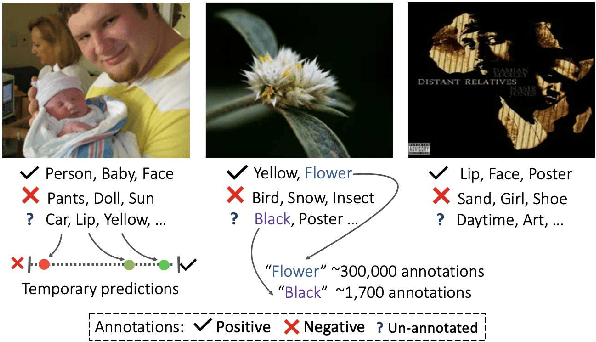
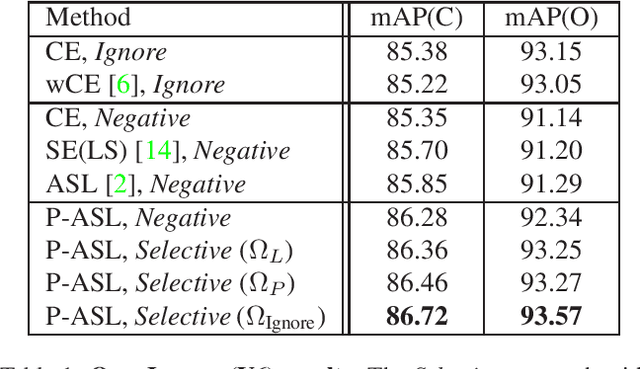

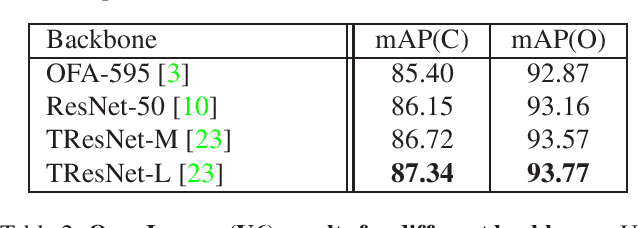
Abstract:Large-scale multi-label classification datasets are commonly, and perhaps inevitably, partially annotated. That is, only a small subset of labels are annotated per sample. Different methods for handling the missing labels induce different properties on the model and impact its accuracy. In this work, we analyze the partial labeling problem, then propose a solution based on two key ideas. First, un-annotated labels should be treated selectively according to two probability quantities: the class distribution in the overall dataset and the specific label likelihood for a given data sample. We propose to estimate the class distribution using a dedicated temporary model, and we show its improved efficiency over a naive estimation computed using the dataset's partial annotations. Second, during the training of the target model, we emphasize the contribution of annotated labels over originally un-annotated labels by using a dedicated asymmetric loss. With our novel approach, we achieve state-of-the-art results on OpenImages dataset (e.g. reaching 87.3 mAP on V6). In addition, experiments conducted on LVIS and simulated-COCO demonstrate the effectiveness of our approach. Code is available at https://github.com/Alibaba-MIIL/PartialLabelingCSL.
PETA: Photo Albums Event Recognition using Transformers Attention
Sep 26, 2021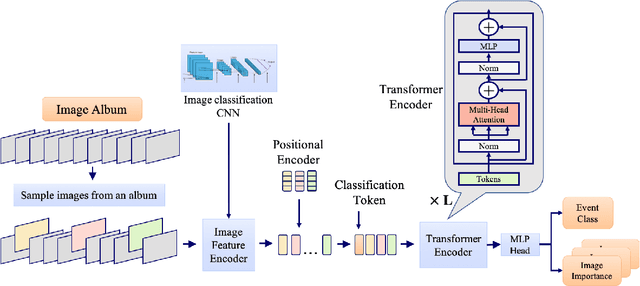
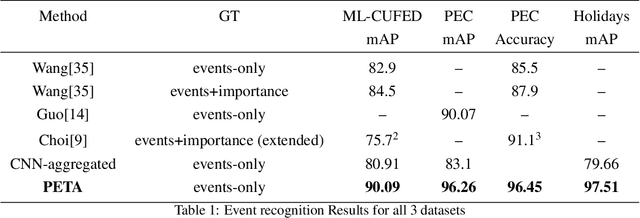
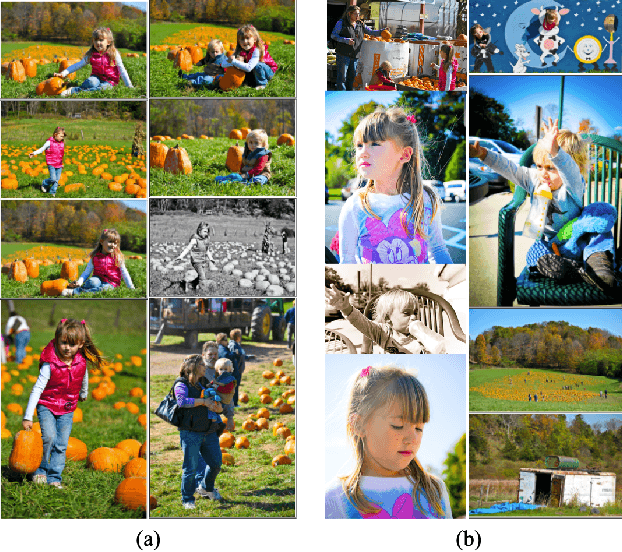
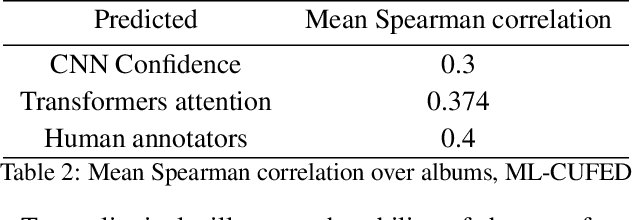
Abstract:In recent years the amounts of personal photos captured increased significantly, giving rise to new challenges in multi-image understanding and high-level image understanding. Event recognition in personal photo albums presents one challenging scenario where life events are recognized from a disordered collection of images, including both relevant and irrelevant images. Event recognition in images also presents the challenge of high-level image understanding, as opposed to low-level image object classification. In absence of methods to analyze multiple inputs, previous methods adopted temporal mechanisms, including various forms of recurrent neural networks. However, their effective temporal window is local. In addition, they are not a natural choice given the disordered characteristic of photo albums. We address this gap with a tailor-made solution, combining the power of CNNs for image representation and transformers for album representation to perform global reasoning on image collection, offering a practical and efficient solution for photo albums event recognition. Our solution reaches state-of-the-art results on 3 prominent benchmarks, achieving above 90\% mAP on all datasets. We further explore the related image-importance task in event recognition, demonstrating how the learned attentions correlate with the human-annotated importance for this subjective task, thus opening the door for new applications.
ImageNet-21K Pretraining for the Masses
May 04, 2021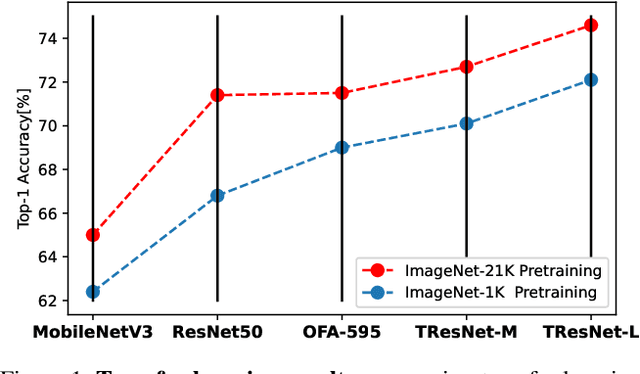
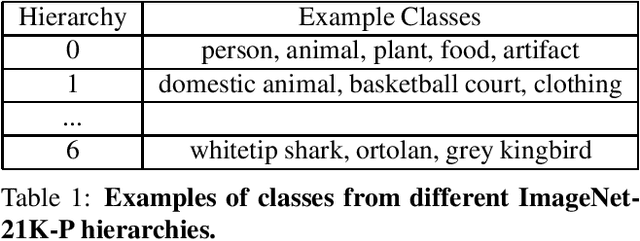

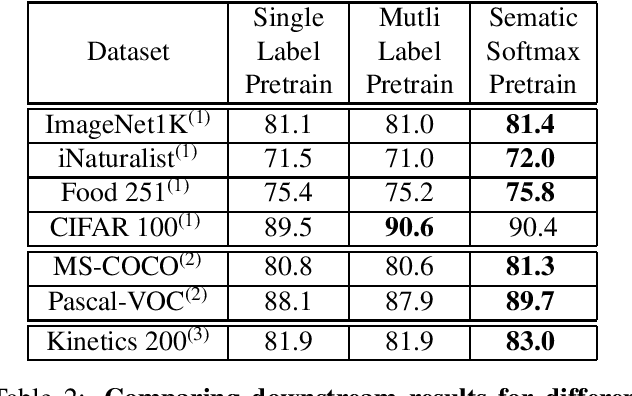
Abstract:ImageNet-1K serves as the primary dataset for pretraining deep learning models for computer vision tasks. ImageNet-21K dataset, which contains more pictures and classes, is used less frequently for pretraining, mainly due to its complexity, and underestimation of its added value compared to standard ImageNet-1K pretraining. This paper aims to close this gap, and make high-quality efficient pretraining on ImageNet-21K available for everyone. Via a dedicated preprocessing stage, utilizing WordNet hierarchies, and a novel training scheme called semantic softmax, we show that various models, including small mobile-oriented models, significantly benefit from ImageNet-21K pretraining on numerous datasets and tasks. We also show that we outperform previous ImageNet-21K pretraining schemes for prominent new models like ViT. Our proposed pretraining pipeline is efficient, accessible, and leads to SoTA reproducible results, from a publicly available dataset. The training code and pretrained models are available at: https://github.com/Alibaba-MIIL/ImageNet21K
An Image is Worth 16x16 Words, What is a Video Worth?
Mar 25, 2021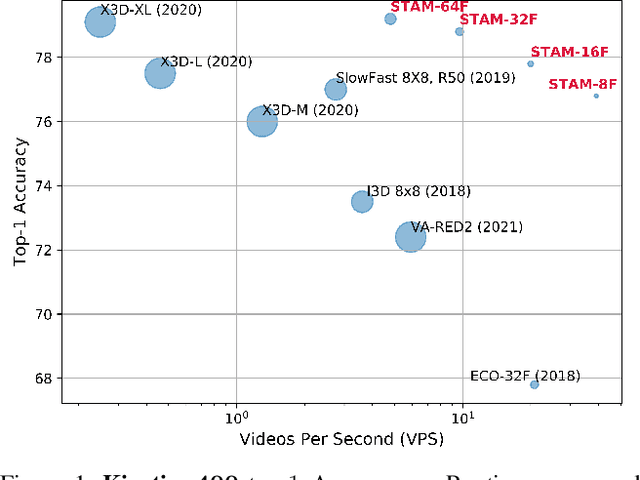
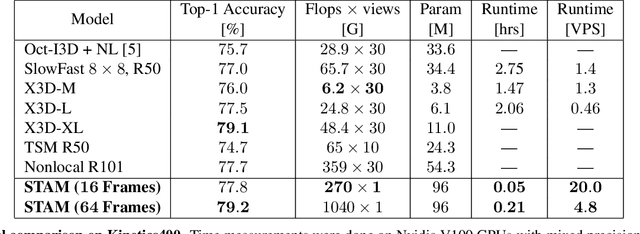


Abstract:Leading methods in the domain of action recognition try to distill information from both the spatial and temporal dimensions of an input video. Methods that reach State of the Art (SotA) accuracy, usually make use of 3D convolution layers as a way to abstract the temporal information from video frames. The use of such convolutions requires sampling short clips from the input video, where each clip is a collection of closely sampled frames. Since each short clip covers a small fraction of an input video, multiple clips are sampled at inference in order to cover the whole temporal length of the video. This leads to increased computational load and is impractical for real-world applications. We address the computational bottleneck by significantly reducing the number of frames required for inference. Our approach relies on a temporal transformer that applies global attention over video frames, and thus better exploits the salient information in each frame. Therefore our approach is very input efficient, and can achieve SotA results (on Kinetics dataset) with a fraction of the data (frames per video), computation and latency. Specifically on Kinetics-400, we reach 78.8 top-1 accuracy with $\times 30$ less frames per video, and $\times 40$ faster inference than the current leading method. Code is available at: https://github.com/Alibaba-MIIL/STAM
HardCoRe-NAS: Hard Constrained diffeRentiable Neural Architecture Search
Feb 23, 2021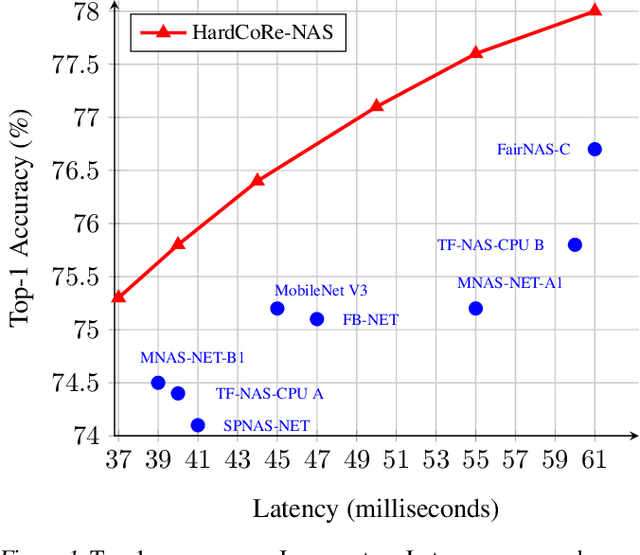
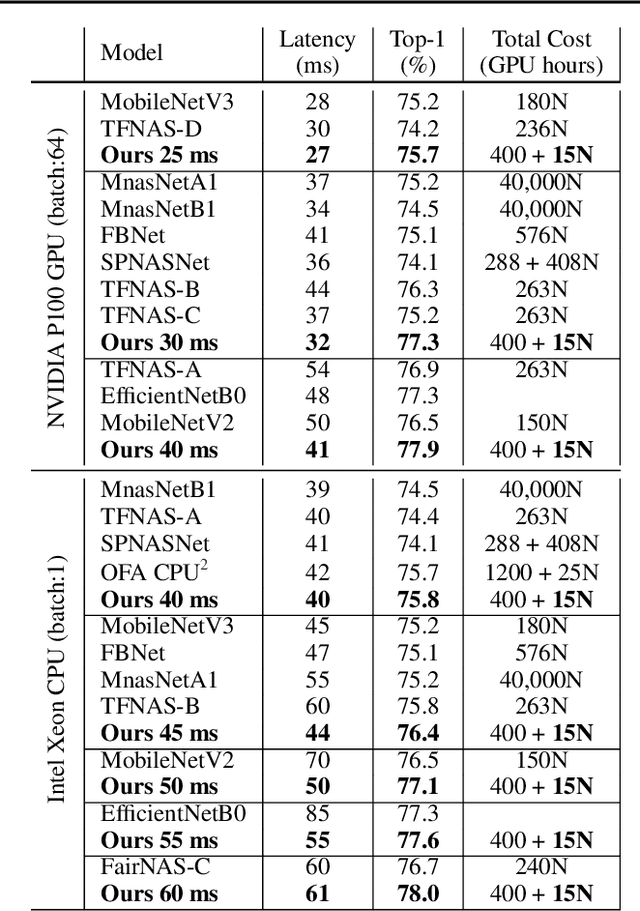
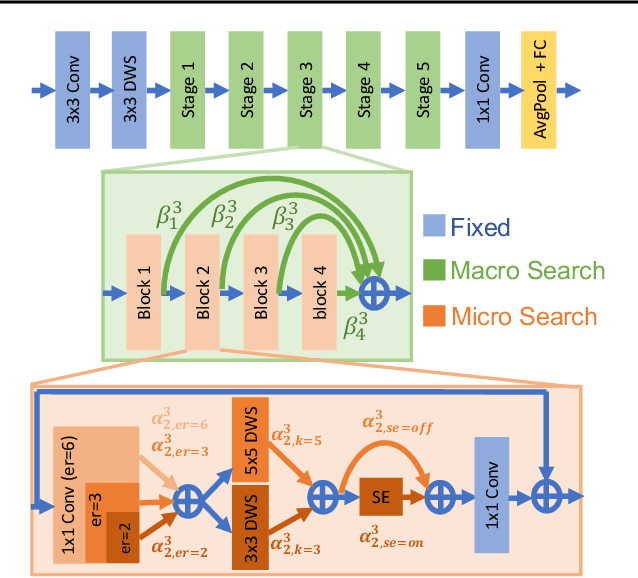

Abstract:Realistic use of neural networks often requires adhering to multiple constraints on latency, energy and memory among others. A popular approach to find fitting networks is through constrained Neural Architecture Search (NAS), however, previous methods enforce the constraint only softly. Therefore, the resulting networks do not exactly adhere to the resource constraint and their accuracy is harmed. In this work we resolve this by introducing Hard Constrained diffeRentiable NAS (HardCoRe-NAS), that is based on an accurate formulation of the expected resource requirement and a scalable search method that satisfies the hard constraint throughout the search. Our experiments show that HardCoRe-NAS generates state-of-the-art architectures, surpassing other NAS methods, while strictly satisfying the hard resource constraints without any tuning required.
 Add to Chrome
Add to Chrome Add to Firefox
Add to Firefox Add to Edge
Add to Edge